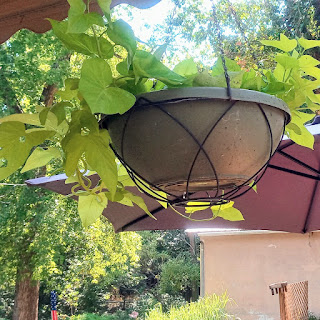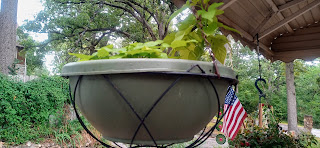My brother gave me a beautiful poinsettia in November and today is February 29th and my poinsettia is as beautiful as the day I received it. I reside in a cold climate transplanting outdoors was not something I could do and bringing it indoors was not an option either so I put it on my enclosed front porch that had southern sun exposure but was not heated.
 |
| Poinsettia received in November |
I guess the cooler
temperature was agreeable because my poinsettia plant is thriving. The temperature on the porch averages out to
be 55 to 65 degrees at night and during the day when the sun is out the
temperature averages out at 65 to 70 degrees.
Poinsettia in February
I take care of my poinsettia by providing it
with a space heater when the temperature drops below freezing. The heat is not hot but instead, it just
prevents our enclosed porch from causing the plant to be stressed from the
cold.
I also set the plant in an area where it gets 6 hours of indirect southern exposure sun daily. The porch provides the poinsettia plant with an area that is not drafty, not too cold, and not too hot.
Then I water the poinsettia in moderation. When the soil is dry to the touch I will water with tepid water. Give the plant a good soaking until the water drains from the bottom. No water is left in the drainage saucer. The soil is thoroughly dried out before I water it again. On average I water it once a week.
My poinsettia will tell me when it needs water. The leaves will drop and some may fall off the plant. I have found if I go over a week without watering that this will occur. But once watered the plant will bounce back.
When summer comes the porch
will be too hot for my poinsettia plant so I plan to move it to move the poinsettia to the root cellar where it is cooler and provides the
plant with artificial sunlight.
















































